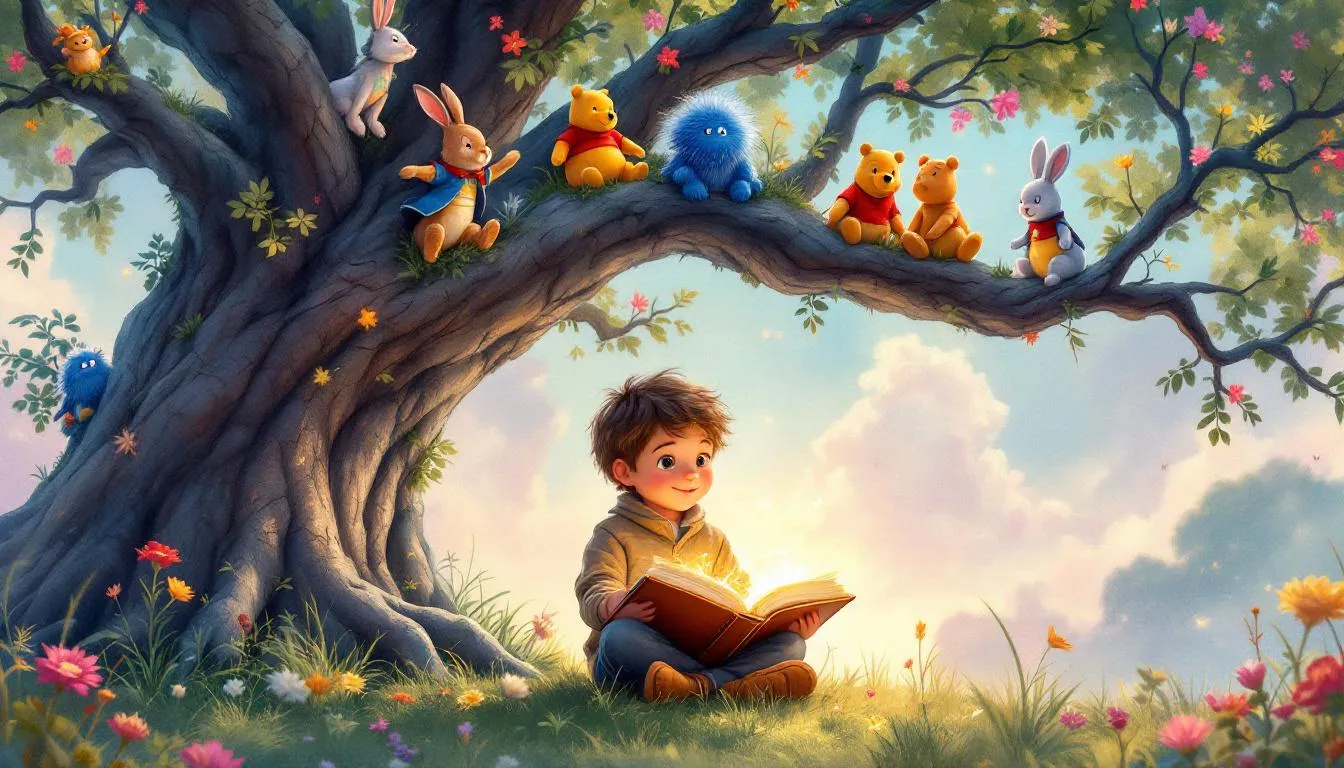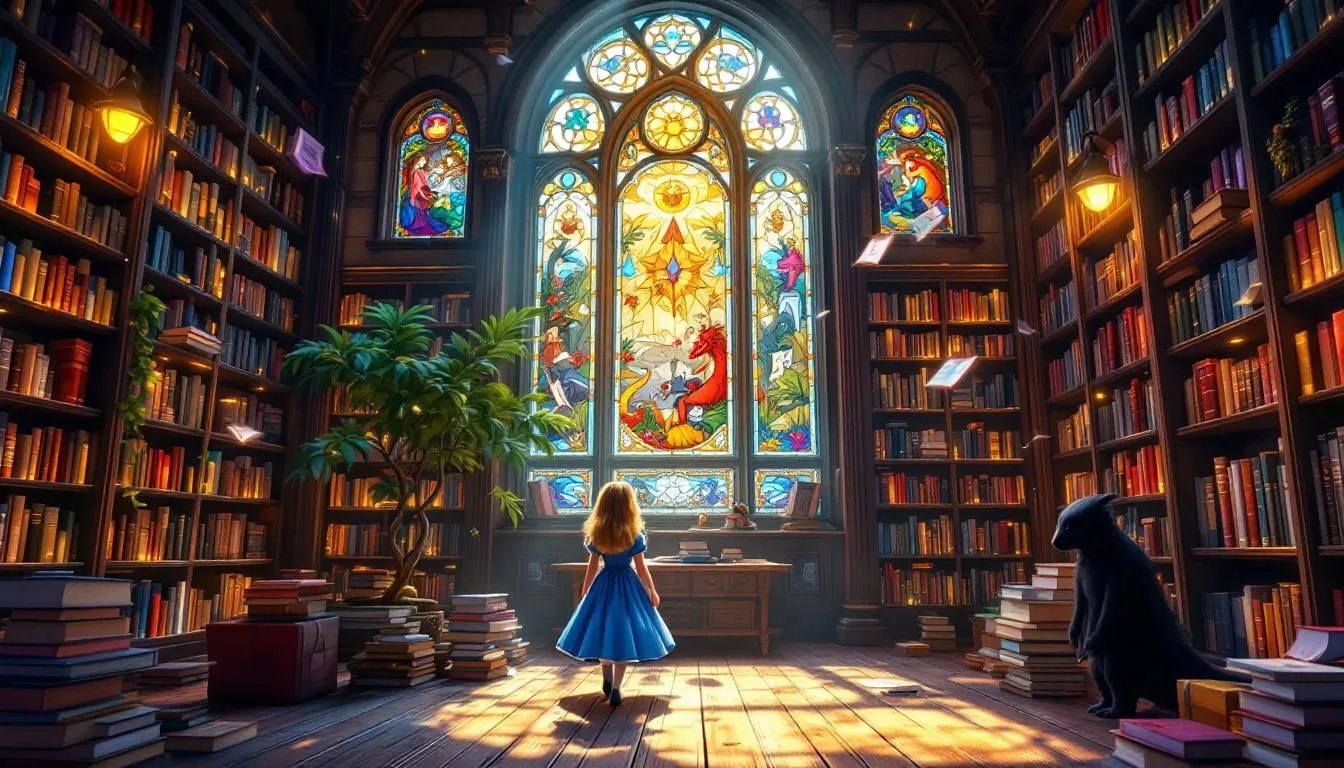Table of Contents
Quick Answer
Classic children’s books are treasure troves of storytelling wisdom, crafted with simplicity yet layered with profound meaning. These stories captivate young minds through engaging narratives and vivid characters, imparting timeless lessons. Old kids’ books teach us about effective storytelling by blending moral insights with unique character perspectives.
The magic lies in their ability to weave rich tales that spark imagination and impart values simultaneously. It’s fascinating to observe how these elements come together, revealing techniques that transcend children’s literature.
How Do Children’s Books Unveil Storytelling Techniques?
When I think about the storytelling techniques in children’s books, I picture a cozy evening, curled up with my favorite childhood book. It’s remarkable how these seemingly simple narratives manage to convey such depth and complexity.
Firstly, the narrative structure in children’s books is often straightforward yet incredibly effective. Consider a classic like “The Very Hungry Caterpillar,” which uses a simple chronological structure to guide young readers through a week of culinary adventures, culminating in the caterpillar’s transformation. This clear progression not only makes the story accessible but also builds anticipation—a crucial element in storytelling.
Another fascinating aspect is the use of simple language to convey complex ideas. Picture “Charlotte’s Web,” where the language is approachable, yet the themes of friendship, life, and death are profound. This simplicity doesn’t dilute the story; instead, it amplifies its emotional impact, making it relatable across ages. I once tried explaining a challenging topic to my child using big words, only to see their eyes glaze over. But when I broke it down like E.B. White, suddenly, it was a light bulb moment!
And let’s not forget the vital role of illustrations. They aren’t just pretty pictures; they carry the narrative forward and often tell parts of the story that words alone cannot. Think of “Where the Wild Things Are”—those illustrations are a journey unto themselves, sparking imagination and adding layers to the text.
These storytelling techniques create a foundation for deeper messages, which we’ll explore next. How do these stories convey moral lessons without heavy-handed preaching? Let’s delve into the heart of these timeless tales.
What Moral Lessons Do They Convey?
The moral lessons tucked away in children’s books are like little nuggets of wisdom wrapped in delightful tales. These stories often tackle themes of honesty, bravery, kindness, and the classic battle between good and evil. Take “The Boy Who Cried Wolf,” for instance. This tale not only warns against lying but also highlights the value of trust and the consequences of deceit.
One of my personal favorites is “The Giving Tree” by Shel Silverstein. It’s a beautiful yet bittersweet story of selflessness and the sacrifices we make for those we love. The tree’s unconditional giving teaches children about generosity and the joy and pain that can come from it. I remember reading this to my child and witnessing that moment of understanding—a tiny spark of empathy in their eyes.
Consider “The Lion and The Mouse,” a fable demonstrating that even the smallest among us can make a big difference. This story plants seeds of humility and respect for all, regardless of size or strength. It’s always a delight to watch kids realize that they, too, can be heroes in their own small ways.
These stories are more than tales; they’re blueprints for building character in young minds. They guide children in understanding complex emotions and social dynamics. Reading about characters who face challenges and grow from them helps children navigate their own experiences, fostering emotional intelligence and resilience.
As we explore how these beloved stories shape perception, we’ll uncover even more of their profound impact on young readers. Understanding how these tales influence our worldview is key to appreciating their timeless appeal.
How Do Kids’ Books Influence Perception?
Diving into the world of children’s books, we find a tapestry of perceptions being woven for young minds. These stories are more than just tales; they’re powerful tools that shape how kids see the world.
Picture this: a child reads “Anne of Green Gables” and learns about embracing one’s uniqueness and the beauty of imagination. This book doesn’t just entertain; it subtly shifts a child’s understanding of individuality and creativity.
Representation and diversity also play a significant role in shaping perspectives. While some classic tales may lack the diversity we strive for today, they still provide valuable lessons. For instance, “The Snowy Day” by Ezra Jack Keats was groundbreaking in its portrayal of an African American child exploring a winter wonderland. This simple representation opened doors for more inclusive storytelling, showing children from all backgrounds that their stories matter.
Moreover, the role of imagination cannot be overstated. Stories like “Alice in Wonderland” transport kids to fantastical realms, inviting them to think beyond the ordinary. This imaginative exploration is crucial in developing creative problem-solving skills and a willingness to embrace new ideas. I remember my own childhood adventures with “Where the Wild Things Are,” imagining wild rumpuses in my backyard and feeling that anything was possible.
These books do more than entertain; they lay the groundwork for a child’s worldview, encouraging empathy, understanding, and a thirst for discovery. As we delve deeper, we can uncover lessons that modern writers can draw from these timeless tales, enhancing the storytelling landscape for future generations.
What Can Modern Writers Learn from Old Kids’ Books?
Modern writers can glean a treasure trove of wisdom from the timeless storytelling techniques found in classic children’s books. These stories remain relevant across generations due to their masterful blend of simplicity and depth—a balance today’s writers can strive to emulate.
One key lesson is the art of crafting stories with universal themes that resonate across ages and cultures. Consider the timeless appeal of stories like “Peter Pan,” which explores themes of adventure, growing up, and the innocence of childhood. Writers can harness this by focusing on themes that touch on the core of human experience, ensuring their stories remain relatable and impactful over time.
Adapting moral lessons for contemporary audiences is another area where modern writers can learn from these classics. While tales like “The Ugly Duckling” teach acceptance and self-worth, today’s writers can expand these themes to address current social issues such as diversity and inclusion. By updating the context while preserving the core message, writers can create stories that speak to today’s readers.
Balancing simplicity with depth is a hallmark of great storytelling. Classic books often use straightforward language to explore complex emotions and situations, making them accessible yet profound. This technique is invaluable for writers aiming to reach a wide audience. I remember attempting to weave a complex narrative into a short story and realizing that paring down the language allowed the emotional core to shine through, much like the classics I’ve cherished.
As we examine these lessons, it’s clear that the storytelling techniques from old children’s books offer a blueprint that modern writers can adapt and reinvent to enrich future narratives.
Key Takeaways
- Classic children’s books reveal timeless storytelling techniques that blend simplicity with profound themes.
- Moral lessons from these tales continue to shape perceptions of honesty, kindness, and courage.
- Modern writers can draw inspiration from these stories to craft narratives that resonate with today’s audiences.
- Embrace the universal themes found in classics to create relatable and impactful stories for all ages.
- Use the balance of simple language and deep emotion to enhance storytelling effectiveness.
Remember, every bedtime story is a stepping stone in your child’s journey to understanding the world. For a modern twist on personalized storytelling, explore the KidTeller app. KidTeller creates a personalized storybook where your child is the hero. Just upload a photo, and we’ll generate a custom book filled with adventures made especially for your toddler or young child – magical, memorable, and uniquely theirs.






